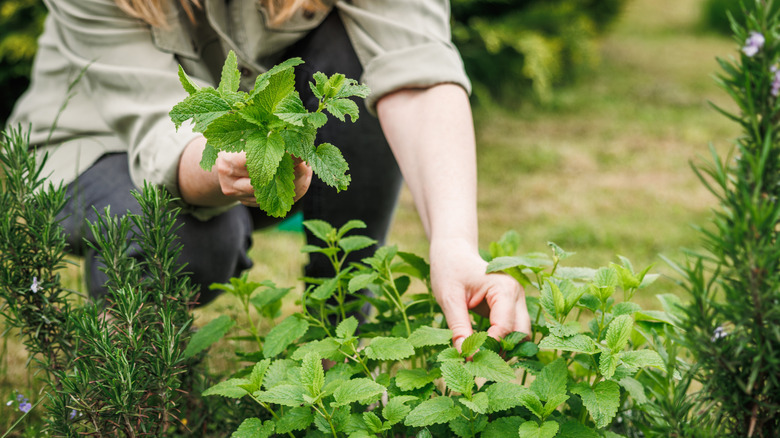Understanding the Challenges of Growing Mint in the Ground
If you dream of harvesting fresh, minty leaves from your garden to make summery beverages or brighten up a savory or sweet dish, you might have considered planting mint directly in the ground. While mint is relatively easy to grow, it’s also known for its aggressive growth habits, which can quickly turn a small patch into an invasive problem.
Mint (Mentha) includes around 20 species of herbs that are prized for their distinctive flavors and aromas. These characteristics make them ideal for culinary use, but they also come with a downside: their tendency to spread rapidly. This aggressive behavior is due to their underground rhizomes and aboveground runners, which can lead to unexpected patches of mint throughout your yard.
The Risks of Planting Mint Directly in the Ground
Many gardening experts advise against planting mint directly in the ground because of its potential to take over your garden. If not monitored closely, mint can escape its designated area and become a nuisance. The rhizomes allow the plant to spread beneath the soil, while runners can grow above ground and root wherever they touch the soil.
Even when planted in containers, mint can still find ways to escape. Roots may sneak out through drainage holes, and runners can climb over the edges in search of new soil. To prevent this, some suggest placing containers on pavers or patios to block root growth into the ground.
Mint’s Hardiness and Adaptability
One of the reasons mint is so popular is its hardiness and adaptability. It thrives in full sun and moist, well-drained soil, but it can also tolerate shade and various soil types. It is suitable for USDA zones 4 through 9 and can withstand both cold winters and hot summers.
Despite its resilience, this adaptability makes it challenging to control once it starts spreading. Gardeners who want to enjoy mint without the risk of it taking over should consider alternative methods of cultivation.
Tips for Growing Mint Without It Taking Over
If you’re determined to grow mint in the ground, there are steps you can take to manage its spread. One effective method is to bury a container in the soil and plant your mint inside. This helps contain the rhizomes and slows down the spread. However, you will still need to prune the runners regularly to keep them from escaping.
Another option is to choose a native mint variety. Native mountain mints (Pycnanthemum) belong to the same family as Mentha and offer similar flavor and aroma. They are hardy and spread via rhizomes, but they are less aggressive than non-native varieties. This makes them a safer choice for gardeners who want to enjoy mint without the risk of it becoming invasive.
Choosing the Right Mint for Your Garden
Native mountain mints not only provide the minty freshness you’re looking for but also serve as a valuable addition to your garden by attracting pollinators and beneficial insects. They are an excellent alternative for those who want the benefits of mint without the challenges of its aggressive growth.
By selecting the right variety and employing proper containment techniques, you can enjoy the versatility of mint in your garden without the risk of it taking over. Whether you opt for a native variety or a more controlled approach, careful planning and regular maintenance will help ensure that your mint remains a delightful addition rather than an unwelcome invader.







